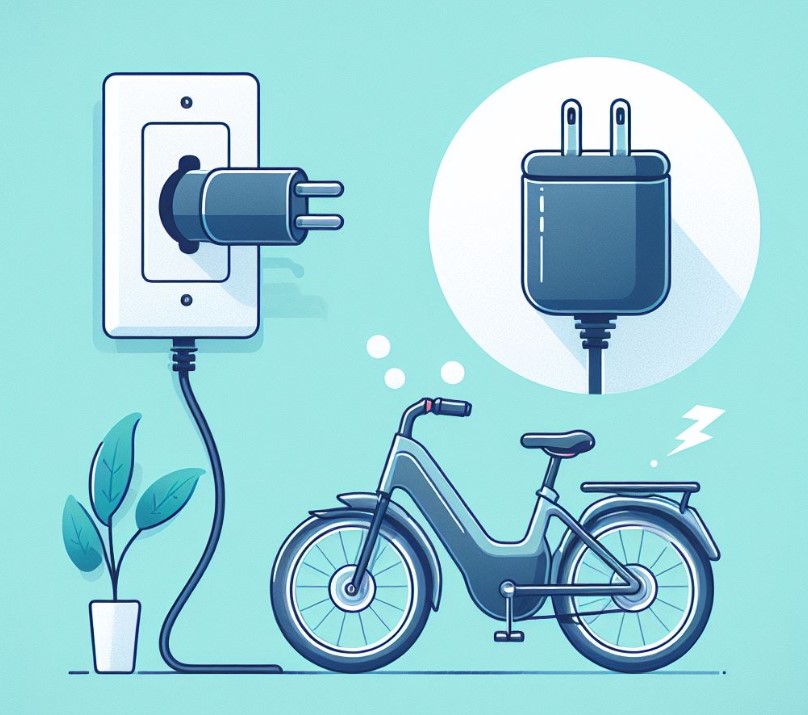Can I Charge My E-Bike With A Different Charger? Answered
This article will explain Can I Charge My E-Bike With A Different Charger? This question touches on the safety, compatibility, and longevity of your e-bike’s power source, making it a significant consideration for every e-bike owner. When it comes to charging your e-bike, the question of whether you can use a different charger is crucial for maintaining the health and efficiency of your battery.
Key Takeaways
- It’s essential to use the correct charger for your e-bike to ensure battery longevity and safety.
- Charging an e-bike with a non-specific charger can lead to potential risks, including battery damage and fire hazards.
- Always consult your e-bike manufacturer’s guidelines before using an alternative charging solution.
Can I Charge My E-Bike With A Different Charger?
The straight answer is no, it’s not recommended. Using a charger other than the one specifically designed for your e-bike’s battery can pose risks to the battery’s lifespan and your safety due to potential mismatches in voltage and amperage.

E-bike batteries are sophisticated components that require careful handling. The right charger ensures that your battery is not only charged safely but also helps in preserving its life span. Let’s delve deeper into why sticking to the recommended charger is essential and what potential risks come with using a different charger.
Understanding E-Bike Battery and Charger Compatibility
The Science Behind Charging Your E-Bike
E-bike batteries, typically lithium-ion, have specific needs in terms of charging voltage and current. The charger that comes with your e-bike is designed to meet these needs perfectly.
Using a different charger with a mismatch in voltage or amperage can lead to undercharging, overcharging, or uneven charging of the battery cells. This not only affects the performance of your battery but can also significantly reduce its lifespan.
Compatibility and Safety Considerations
Safety is another critical reason to use the specified charger. Chargers that are not designed for your e-bike’s battery may lack the necessary safety features to prevent overcharging, overheating, or short circuits.
These safety mechanisms are vital for preventing accidents, including fires or explosions, which, while rare, are serious risks when dealing with high-capacity lithium-ion batteries.
The Risks of Using a Non-Specific Charger
Potential Damage to Your E-Bike’s Battery
The immediate risk of using an unsuitable charger is damage to your battery. This damage can manifest as reduced capacity, shortened lifespan, or in the worst cases, complete battery failure. Batteries are among the most expensive components of an e-bike, and ensuring their longevity is crucial for maintaining the overall value of your investment.
Safety Hazards
The risk of fire or explosion, though low, is significantly heightened when using a charger not intended for your battery. These incidents can occur due to overcharging, which leads to excessive heat buildup, potentially igniting the battery’s internal materials. It’s a risk that’s easily avoidable by sticking to the recommended charging equipment.
Best Practices for Charging Your E-Bike
Always Use the Manufacturer’s Charger
The safest and most effective way to charge your e-bike is by using the charger provided by the manufacturer. These chargers are specifically designed for your battery’s chemistry, capacity, and voltage requirements, ensuring optimal charging performance and safety.
What to Do If Your Charger Is Lost or Damaged?
If your original charger is lost or damaged, the best course of action is to purchase a replacement directly from the manufacturer or an authorized dealer. This ensures you get a charger that is fully compatible with your battery. Avoid third-party chargers that claim to be universal, as they may not meet the specific needs of your e-bike’s battery.
How To Charge E-Bike Battery Without Charger?
Charging an e-bike battery without its original charger is generally not recommended due to the potential risks to the battery’s health and user safety. However, in situations where the original charger is unavailable, some alternatives can be cautiously considered.

One method is using a universal lithium battery charger that can be adjusted to match the voltage and current requirements of the e-bike battery. It’s crucial to ensure that the specifications precisely match those of the battery to avoid damage.
Another approach involves using a DC power supply that allows you to set the desired voltage and current. This method requires technical knowledge to safely connect the power supply to the battery terminals while ensuring the settings do not exceed the battery’s specifications. It’s also essential to monitor the charging process closely to prevent overcharging.
Regardless of the method, it’s paramount to prioritize safety and battery health. Improvising a charging solution should only be a temporary measure until the appropriate charger can be obtained.
Are E-Bike Chargers Universal?
E-bike chargers are not universally compatible across all models and brands. E-bike batteries come in various voltages and capacities, requiring chargers that can provide the correct amount of power.
Additionally, the connector types can vary between manufacturers, making it difficult to use a single charger for different e-bikes. While some e-bikes might use similar voltage batteries, the charging protocol, including the rate of charge and the method of balancing the cells, can differ significantly.

Universal chargers that claim compatibility with multiple battery types are available but should be used with caution. It’s vital to ensure that such a charger can be precisely adjusted to match the battery’s required voltage and amperage.
Even with these precautions, the risk of improperly charging the battery or damaging it remains higher than when using the manufacturer-provided charger designed specifically for the battery.
What Can I Use To Charge My E-Bike?
The safest option to charge your e-bike is always the charger that comes with it or a replacement charger approved by the manufacturer.
These chargers are specifically designed to match the battery’s technical requirements, ensuring safe and efficient charging. If the original charger is not available, consider the following options with caution:
- Manufacturer-approved chargers: Some e-bike manufacturers offer replacement chargers or recommend compatible models for their batteries. These are the next best option after the original charger.
- Universal lithium battery chargers: These chargers can be adjusted for voltage and current to match your e-bike battery’s specifications. They often come with multiple connector types to fit different batteries. However, precise adjustment and careful monitoring are crucial to avoid battery damage.
- DC power supplies: For those with technical expertise, a programmable DC power supply can be used to mimic the original charger’s function. This method requires careful setting of voltage and current limits based on the battery’s requirements and constant monitoring to prevent overcharging.
Regardless of the method chosen, it’s essential to understand the risks involved in using non-original chargers, including the potential for battery damage and voided warranties. Always prioritize safety and battery health by closely following the battery’s charging specifications.
Conclusion
Charging your e-bike with a different charger can introduce risks and complications, from reduced battery life to potential safety hazards. The importance of using the designated charger cannot be overstated, as it ensures the optimal performance and longevity of your battery. For the safety and efficiency of your e-bike, sticking to the manufacturer’s recommended charger is always the best practice.
People Also Ask
Can I use a car battery charger to charge my e-bike?
Using a car battery charger to charge your e-bike is not advisable. Car battery chargers are designed for lead-acid batteries and have different voltage and current specifications compared to e-bike batteries, which are usually lithium-ion. Using a car battery charger can result in improper charging and potential damage to your e-bike battery.
Is it possible to overcharge my e-bike battery?
Modern e-bike batteries, especially those with lithium-ion cells, typically come with built-in protection circuits to prevent overcharging. However, using an incompatible charger can bypass these protections, leading to potential overcharging. Always use the recommended charger and follow the manufacturer’s charging guidelines.
Why does my e-bike battery take longer to charge with a different charger?
If your e-bike battery takes longer to charge with a different charger, it’s likely because the charger has a lower amperage output than the original charger. Chargers with lower amperage deliver less power to the battery, resulting in slower charging times.
Can I charge my e-bike directly from a solar panel?
Charging an e-bike directly from a solar panel is possible, but it requires a solar charge controller that matches the e-bike battery’s charging specifications. The controller ensures the correct voltage and current are delivered to the battery, preventing damage. Direct connection without a controller is not recommended.

Welcome to the exhilarating world of Matt Rex, a professional car racer turned renowned vehicle enthusiast. Immerse yourself in his captivating blog as he shares heart-pounding adventures, expert reviews, and valuable insights on cars, trucks, jets, and more. Fuel your passion for speed and discover the beauty of vehicles through Matt’s engaging stories and meticulous expertise. Join the ever-growing community of enthusiasts who find inspiration and expert advice in Matt Rex’s blog—a digital hub where the thrill of speed meets the pursuit of knowledge.







